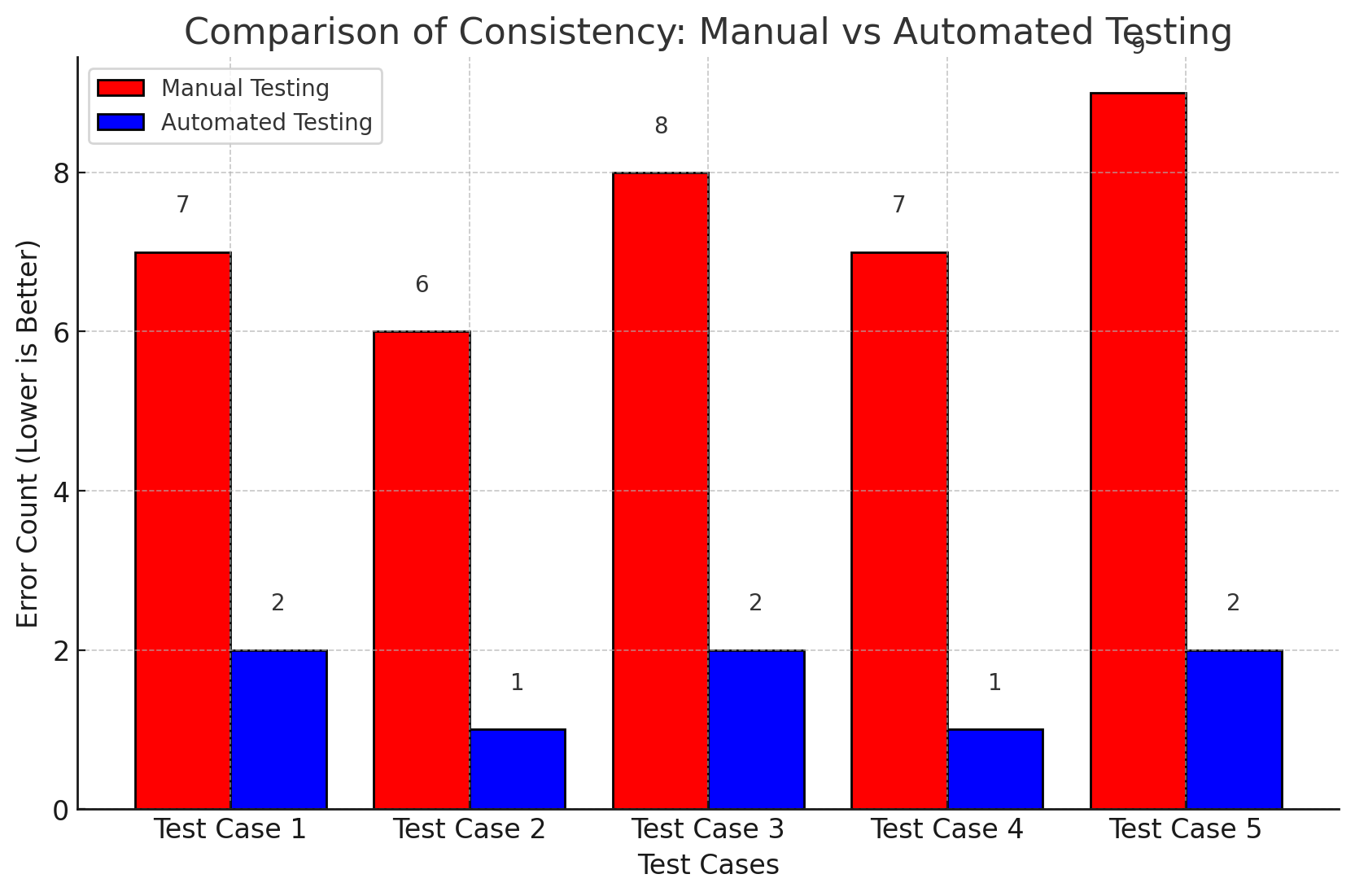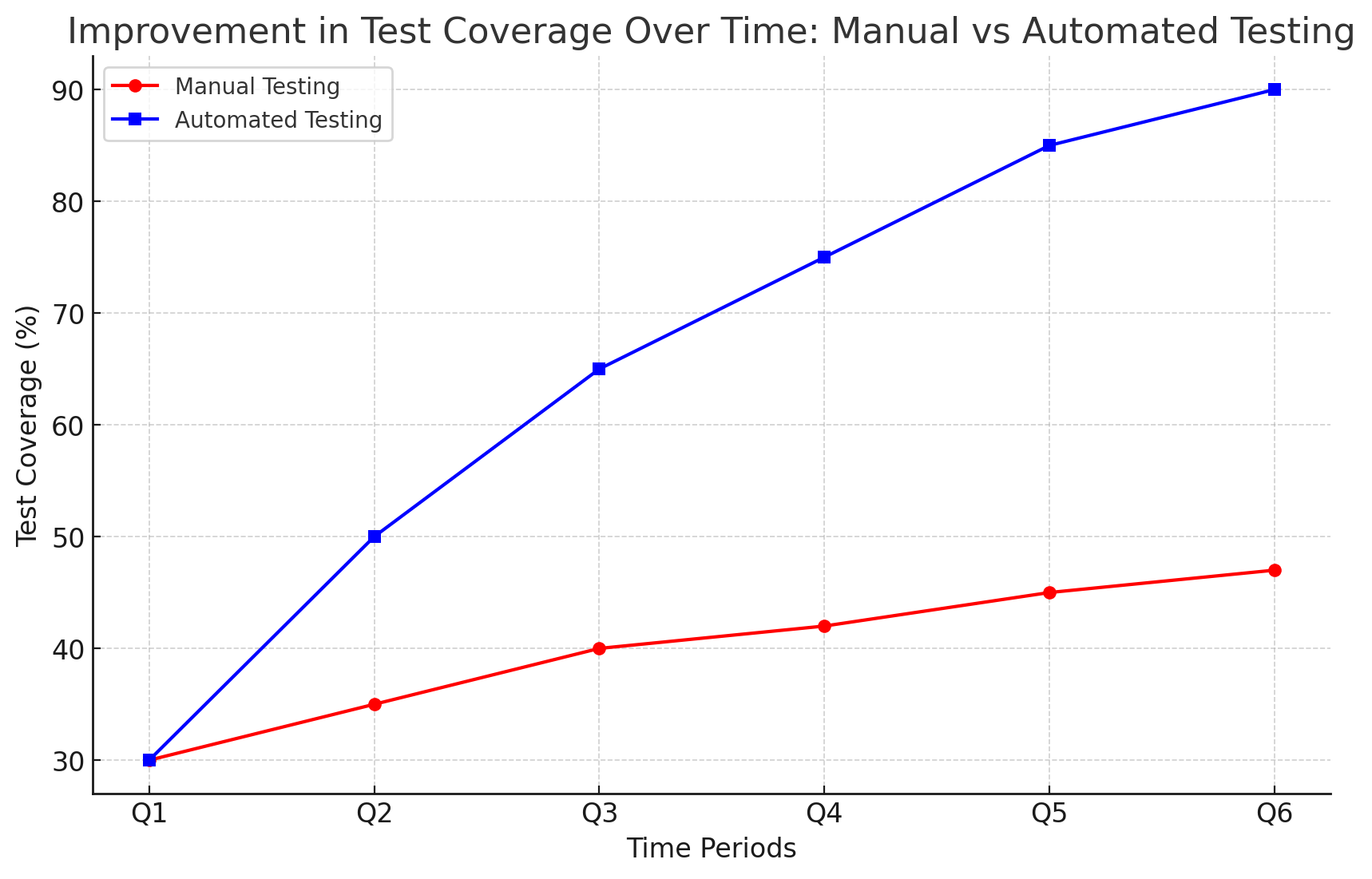In the fast-paced world of Agile development, where rapid iterations and quick releases are the norm, quality assurance (QA) is paramount. However, manual testing can no longer keep up with the demands of modern software development. Enter Automated Software Testing—a game-changing approach that is revolutionizing quality assurance in Agile environments.
Automated testing is not just a luxury anymore; it’s a necessity for Agile teams looking to maintain the pace of innovation while ensuring the highest standards of software quality. In this blog, we will explore how automated testing is transforming QA processes in Agile development, its benefits, and how businesses can leverage this technology to deliver better software faster.
Automated software testing involves using specialized tools and scripts to perform tests on software applications, reducing the need for manual intervention. This method improves the efficiency, accuracy, and speed of the testing process, ensuring consistent results across multiple test cycles. Artificial Intelligence (AI) in automated testing takes this further by enabling systems to learn from data, adapt to new scenarios, and make intelligent decisions. AI-powered testing tools can automatically detect defects, predict potential issues, and optimize test cases, making the process more adaptive and effective. This combination of automation and AI enhances software quality while minimizing human errors.
What is Automated Software Testing?
Automated software testing involves using specialized tools and scripts to automatically execute pre-defined tests on software applications. Unlike manual testing, where human testers execute test cases, automated tests are performed by machines, ensuring faster, more consistent, and error-free testing. Automated testing can be applied to a variety of testing types, such as unit testing, regression testing, functional testing, and performance testing.
In an Agile development environment, where teams work in short iterations and need constant feedback, automated testing helps streamline the QA process by reducing the time spent on repetitive tasks and providing immediate feedback.
How Automated Software Testing Enhances Quality Assurance in Agile Development
The shift from manual to automated testing in Agile environments has significantly impacted software quality, development speed, and team productivity. Here are the primary ways automated testing is enhancing QA in Agile development:
1. Speed and Efficiency
Automated tests can run much faster than manual tests. What would take hours or days of manual testing can be executed in minutes with automation. This speed allows Agile teams to test more often and at every stage of the development cycle. Automated tests can run overnight or as part of a continuous integration (CI) pipeline, ensuring that every code change is validated before deployment.
Example:
With automated testing tools like Selenium or JUnit, teams can run thousands of test cases in parallel, speeding up the process of identifying defects and ensuring that the software is consistently meeting quality standards.
2. Consistency and Accuracy
Manual testing is prone to human error, but automated testing ensures that tests are executed in exactly the same way every time. This eliminates the risk of missed bugs or inconsistencies across different testing sessions. Automated tests also reduce the likelihood of issues being overlooked due to tester fatigue or oversight.

3. Continuous Integration and Continuous Testing
In Agile development, Continuous Integration (CI) is a critical practice where developers frequently integrate code into a shared repository. With automated tests integrated into the CI pipeline, developers can get immediate feedback on their changes. This allows for quick identification of defects, ensuring that quality is maintained throughout the development cycle.
Example:
Jenkins is a widely-used CI tool that integrates with testing frameworks like Selenium, JUnit, and TestNG to run automated tests every time new code is committed. This ensures that issues are caught early, reducing the cost and effort of fixing bugs later in the development process.
4. Regression Testing
Regression testing ensures that new code changes do not break existing functionality. In Agile, where software is developed and deployed in small iterations, running regression tests after every change can become tedious and time-consuming. Automated testing helps to run regression tests faster and more reliably, ensuring that updates or new features do not introduce new bugs.
Example:
Automated testing frameworks like Appium or Cucumber allow teams to write regression test suites once and reuse them in future iterations. This significantly reduces the time required for testing and ensures that old issues don’t reappear after new releases.
5. Better Test Coverage
Automated testing allows you to achieve higher test coverage, ensuring that more areas of your application are tested. Manual testing often limits coverage due to time constraints, but automated tests can easily execute a broad set of test cases across different browsers, devices, and environments. This leads to better overall software quality.

Case Study: How Automated Testing Improved Quality Assurance at XYZ Tech
XYZ Tech is a software company that adopted Agile methodologies to enhance their development speed. Initially, they relied on manual testing for quality assurance, which led to delays, inconsistent results, and poor feedback loops. As the company scaled, the need for a more efficient testing process became evident.
Solution:
The company implemented an automated testing framework using Selenium, JUnit, and Jenkins. Automated tests were integrated into the CI pipeline, enabling immediate feedback on every code change. This automation significantly reduced the time spent on regression testing and allowed developers to focus more on coding and innovation.
Results:
- Testing time was reduced by 60%.
- The number of defects found in production decreased by 40%.
- Regression testing was completed within minutes, enabling faster release cycles.
- Continuous testing ensured that issues were identified and resolved early in the development process.
XYZ Tech’s transition to automated testing allowed them to maintain high-quality standards while increasing their release frequency and speed to market.
The Future of Automated Testing in Agile Development
Automated testing tools are continuously evolving. As AI and machine learning become more integrated into the software development lifecycle, we can expect even more advancements in automated testing. AI-powered testing tools, such as Applitools and Test.ai, are already making it easier for teams to create tests, detect visual bugs, and even predict areas of the application that may need testing.
In the future, we may see more advanced self-healing tests that can automatically adjust when the application’s UI changes, or intelligent test selection that prioritizes tests based on the likelihood of failure.
The future of automated testing in Agile development and software development, enhanced by AI, promises faster, more efficient workflows. AI will enable predictive analytics, adaptive testing, and smarter bug detection, improving software quality and accelerating release cycles. Automation will seamlessly integrate into Agile practices, driving innovation and continuous improvement.
Conclusion
Automated software testing is revolutionizing quality assurance in Agile development by increasing testing efficiency, consistency, and accuracy. With the need for rapid development and frequent releases, automated testing has become an essential tool for maintaining high software quality. By adopting automated testing frameworks, Agile teams can enhance their productivity, reduce the time spent on manual testing, and deliver more reliable software at a faster pace.
As automated testing continues to evolve with AI and machine learning, its role in Agile development will only become more critical. Organizations looking to stay competitive and meet the demands of modern software development should embrace automation as an integral part of their QA strategy.
FAQs
Automated software testing involves using tools and scripts to automatically execute tests on software applications. In Agile development, automated testing is crucial because it allows teams to quickly validate code changes, ensuring software quality while maintaining the fast pace of development. It reduces manual testing effort, improves accuracy, and accelerates release cycles.
Automated testing improves software quality by ensuring that tests are consistently executed and by providing quick feedback on code changes. It helps catch bugs early in the development process, ensures higher test coverage, and reduces human error in testing, leading to more reliable and stable software.
Common tools used for automated testing in Agile environments include:
- Selenium: For automating web applications.
- JUnit and TestNG: For unit and integration testing.
- Appium: For automating mobile application testing.
- Jenkins: For continuous integration and continuous testing.
- Cucumber: For behavior-driven development (BDD) testing.
While automated testing significantly enhances the testing process, it cannot entirely replace manual testing. Some test cases, such as exploratory testing or tests requiring human intuition, are best suited for manual testing. Automated testing is ideal for repetitive tasks like regression testing, performance testing, and validation of code changes.





